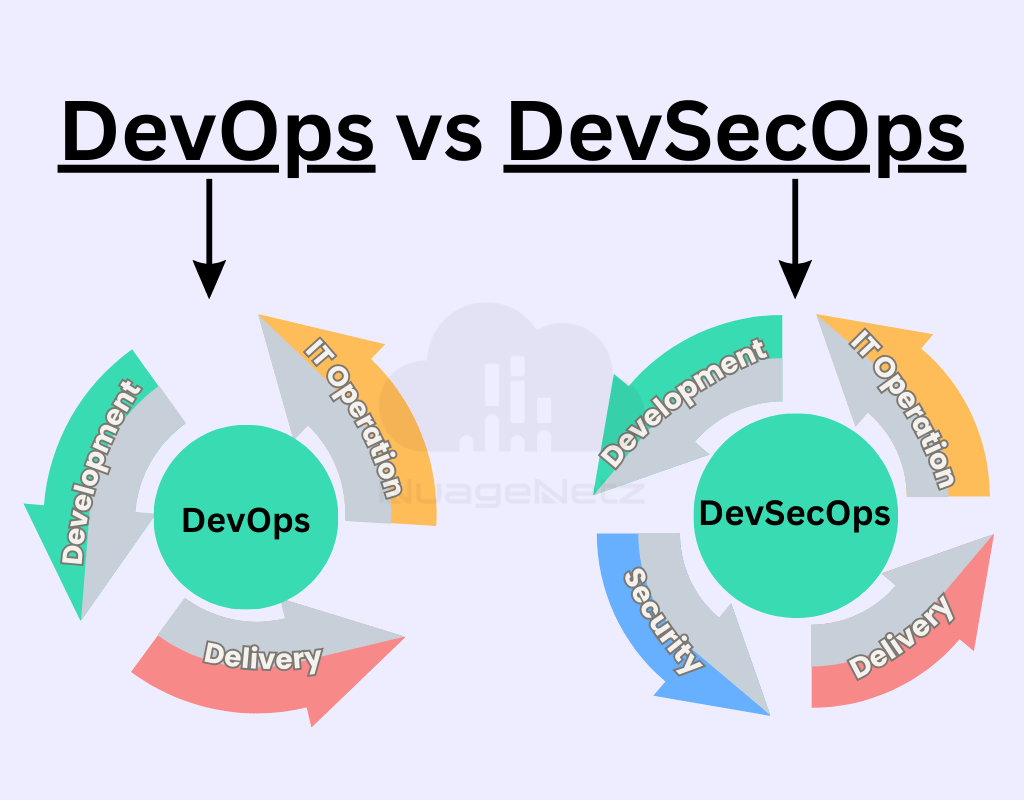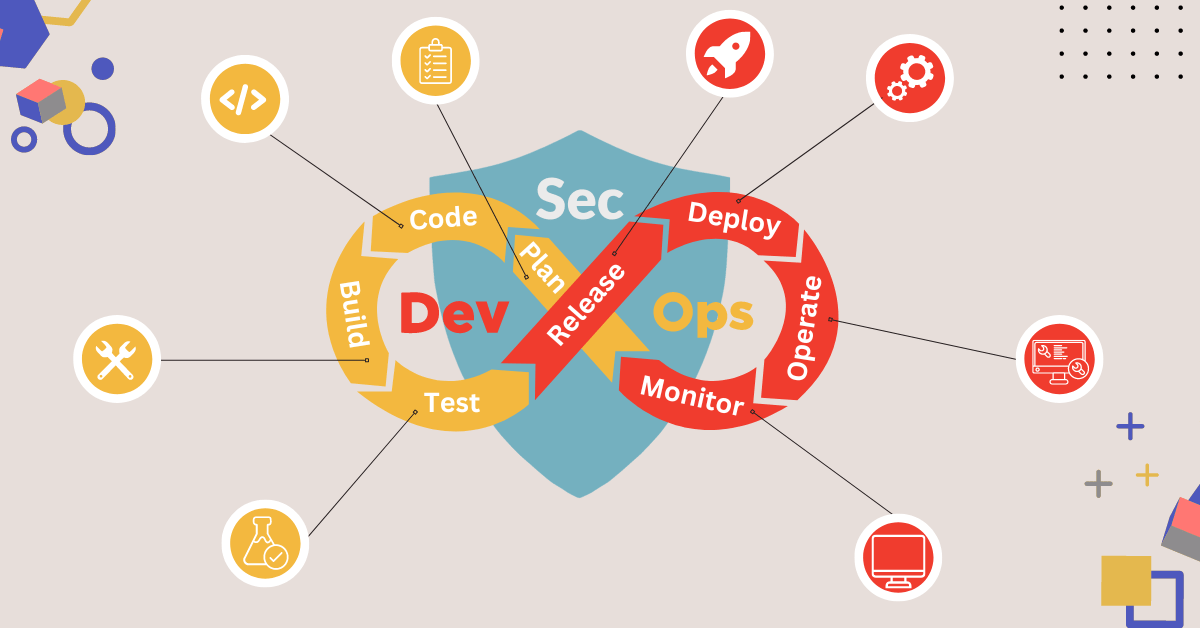Ready to integrate security seamlessly into your development process? Explore DevSecOps and its transformative impact in our latest post!
Understanding DevSecOps : In the fast-paced world of software development, security is paramount But how do we seamlessly integrate security practices into our development workflows? Enter DevSecOps. This article explores the concept, evolution, and significance of DevSecOps in modern software development.
What is DevSecOps?
DevSecOps, which stands for Development, Security, and Operations, is a methodology that aims to make everyone in an organization responsible for security. It emphasizes the collaboration between development, security, and operations teams to ensure that security is integrated into every stage of the software development lifecycle. By adopting a DevSecOps approach, organizations can implement security measures at the same pace and scale as their development and operations processes.
The Need for Security in Development:
To protect the entire software development lifecycle, it is crucial for DevSecOps. The integration of security practices early in the development process helps identify and mitigate vulnerabilities and threats effectively. Here are some reasons highlighting the need for security in DevSecOps:
- Early Detection of Vulnerabilities: Implementing security practices in DevSecOps allows for the early detection of security vulnerabilities in the software development lifecycle. This helps in addressing issues before they become critical problems.
- Reduced Security Risks: By embedding security into the development process, DevSecOps helps in reducing security risks associated with deploying software applications. It ensures that security measures are in place at every step of development.
- Faster Response to Security Threats: DevSecOps enables teams to respond quickly to security threats by incorporating security tools and practices in the development pipeline. This results in faster detection and resolution of security issues.
- Compliance and Regulations: With the increasing number of regulations and compliance requirements, integrating security into DevSecOps ensures that applications meet the necessary security standards from the beginning of the development process.
- Enhanced Trust and Reputation: Building security into the development process enhances the trust and reputation of the organization among its customers and stakeholders. It demonstrates a commitment to delivering secure and reliable software products.
Exploring the Difference: DevOps vs DevSecOps

DevOps (Development and Operations) :DevOps is a methodology focused on improving collaboration and efficiency between development and operations teams. It emphasizes automation, continuous integration, and rapid delivery to streamline the software development lifecycle.
DevSecOps (Development, Security, and Operations) :DevSecOps is an extension of DevOps that integrates security practices into every stage of the software development process. It aims to embed security seamlessly into the DevOps workflow, ensuring that security is treated as a shared responsibility among development, operations, and security teams.
Key Principles of DevSecOps:
Automation in security processes : Automation is the backbone of DevSecOps, enabling continuous security testing and deployment without compromising speed or quality.
Continuous integration and continuous deployment (CI/CD) : CI/CD pipelines facilitate the seamless integration of security checks into the development process, ensuring that vulnerabilities are identified and addressed early on.
- Automated testing for security vulnerabilities : Automated testing tools, such as Static Application Security Testing (SAST) and Dynamic Application Security Testing (DAST), play a crucial role in identifying and mitigating security vulnerabilities.
Collaboration between development and security teams : DevSecOps emphasizes collaboration and communication between development and security teams, breaking down silos and fostering a culture of shared responsibility for security.
Breaking down silos : Silos between development, operations, and security teams can impede collaboration and hinder the timely detection and resolution of security issues. DevSecOps encourages cross-functional teams and open communication channels.
Benefits of DevSecOps:

Improved collaboration between development and security teams
DevSecOps promotes collaboration between traditionally siloed development and security teams, fostering a shared understanding of security requirements and priorities. This collaboration enables organizations to address security concerns proactively and effectively throughout the development lifecycle.
Faster detection and remediation of security vulnerabilities
By integrating security testing tools and practices into the development pipeline, organizations can identify and remediate vulnerabilities earlier in the process. This proactive approach reduces the likelihood of security breaches and minimizes the impact of any potential incidents.
Enhanced software quality and reliability
Security is closely linked to software quality and reliability. By addressing security concerns early and continuously, organizations can build more robust and resilient software products that meet the needs and expectations of end-users.
Cost savings through early detection of security issues
The cost of addressing security issues increases exponentially the longer they remain undetected. By integrating security into development and detecting vulnerabilities early, organizations can minimize the financial impact of security incidents and avoid costly remediation efforts down the line.
Best Practices for DevSecOps Implementation:
A. Establishing a culture of security awareness within development team
Building a culture of security awareness is essential for the successful implementation of DevSecOps. This involves educating developers about security best practices, empowering them to take ownership of security concerns, and providing them with the tools and resources they need to integrate security into their daily workflows.
B. Integrating security testing tools into development pipeline
Automation is a cornerstone of DevSecOps, enabling organizations to streamline security processes and detect vulnerabilities more efficiently. By integrating security testing tools, such as static and dynamic analysis scanners, into the development pipeline, organizations can identify and remediate security issues in real-time.
C. Automation: Streamlining security processes for efficiency
Automation plays a crucial role in DevSecOps, enabling organizations to automate routine security tasks, such as vulnerability scanning and compliance checks. By automating these processes, organizations can reduce the burden on development teams and ensure that security is consistently applied throughout the software development lifecycle. This not only improves efficiency but also enhances the overall security posture of the organization by minimizing human error and ensuring that security measures are consistently applied.
Conclusion:
In conclusion, the adoption of DevSecOps brings about a multitude of benefits that are invaluable in today’s rapidly evolving technological landscape. By integrating security into every aspect of the development process, organizations can enhance collaboration, improve software quality, and mitigate risks effectively. DevSecOps not only accelerates time to market but also fosters a culture of security awareness and proactive risk management. As organizations continue to embrace DevSecOps principles, they position themselves at the forefront of innovation while ensuring the security and reliability of their software products. Embracing DevSecOps isn’t just a trend—it’s a strategic imperative for organizations looking to thrive in an increasingly digital world.
About Us
NuageNetz IT Services Pvt. Ltd. is a cutting-edge IT company that specializes in Cloud Computing, Web Development, DevOps and Agile Methodologies. Our team of skilled professionals is dedicated to providing exceptional services to our clients using the latest technologies and tools
Got Something to say about our Blog?
Have something to say? Drop your thoughts, feedback, or questions in the comments below!
